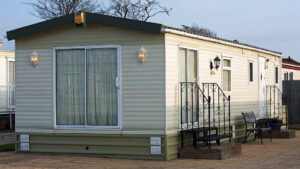House Leveling in Seguin, Texas

In house leveling, a home is raised as close to its original state as possible (pending construction allowances). Most often, foundation repair is required to level a home. Sinking homes have structural problems, especially if they sink at one end or multiple locations. In most cases, house leveling will correct that problem, but the source of the problem needs to be addressed as well to prevent it from repeating.
Various factors can contribute to sinking homes, sagging floors, and structural damage, including erosion on the foundation, structural damage, unstable soil conditions, and underslab plumbing leaks. To achieve a more permanent solution, it’s important to correct these issues before house leveling is performed.
Foundation Settling – The Root of Uneven Floors
Is there a reason for foundation heaving or settlement? The main culprits are water and soil. Together, they can create a force that can crack walls as well as cause foundation movement, including settlement. A slab foundation, pier and beam foundation, and a basement foundation can all move. Excessive heaving or settlement will eventually cause a house foundation to crack. You may need to level your house.
Along with leveling the house, problems causing foundation shifts need to be addressed. Clay soils are notorious for shifting foundations. Due to the clay soil’s ability to absorb water, it exerts excessive pressure on the foundation, causing it to heave upward. A foundation settles downward as soil dries, shrinks, and shrinks. Excessive water in the soil beneath the foundation can be caused by poor exterior drainage.
Similarly, excessively watered flowerbeds or plumbing leaks can cause water to seep under a slab foundation, causing soil saturation. Additionally, improperly graded driveways, walks, and patios can cause foundation soil to become oversaturated.
House Leveling – Slab Foundation Homes
There are a handful of methods that can be used to level houses with slab foundations. Some of these techniques include excavating from the exterior of the home and installing helical piers, bell bottom piers, steel pilings, or concrete pilings, mudjacking, or using a chemical substance to fill in the gaps under the foundation.
House Leveling – Crawl Space Foundation Homes
House leveling can be accomplished using a few effective methods for homes with crawl space foundations. Piles are often installed underneath existing piers to reinforce them, rods and braces are used to repair damaged support stations and correct sagging floors, or a chemical mixture is used to stabilize the soil underneath the foundation.
The Impact of Soil Problems
When too much moisture is present in the soil, it shifts as well. Roots from large trees can grow below the foundation. It is estimated that these roots can absorb up to 100 gallons of water per day. When soil loses moisture, it shrinks. Shrinkage of the soil contributes to differential settlement of foundations. An area of the foundation may move differently from another area of the foundation. When a foundation is affected by differential movement, it may develop cracks shaped like stairs. Leveling a house can help restore the foundation and prevent future cracks.
If you do not have the machinery and experience necessary to level the house, try not to attempt this yourself. If you want to make sure that your mobile home is properly leveled so that you can continue living in one, then seek out the services of a professional leveler. Call us today at 830-240-1680, for professional leveling and tunneling services.